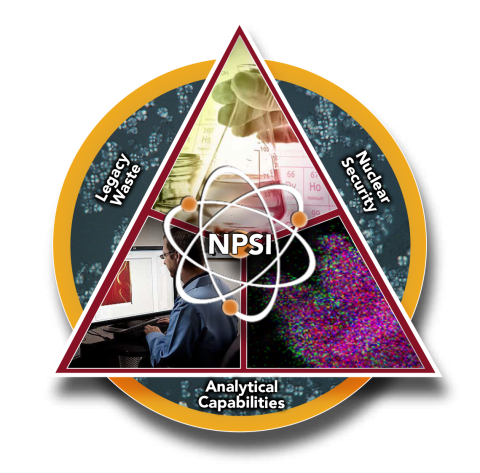Researchers at the Pacific Northwest National Laboratory (PNNL) are working on better understanding of how some metal particles behave in nuclear fuel. They hope to contribute to the design of future fuels that will be safer and more efficient. One recent experiment showed how tellurium containing particles in uranium oxide fuel contributed to the formation and rupture of high-pressure gas bubbles. Such ruptures can damage the fuel and its protective outer layer which is known as the cladding. Details of the experiment can be found in a research paper featured in the March 21st edition of Physical Chemistry Chemical Physics. This research was sponsored by the PNNL’s Nuclear Process Science Initiative (NPSI). It is the latest in a series of NPSI-funded projects that have produced insights about noble metal phase (NMP) particle behavior in nuclear fuel during normal reactor operations.
It was believed that tiny NMP particles found in spent nuclear fuel consisted of five metals including ruthenium, molybdenum, palladium, technetium, and rhodium. Recently, NPSI researchers found that there was a sixth metal, tellurium, in spent fuel. Other recent experiments have found NMP particles in the fuel’s zirconium cladding near the interface with the fuel. These experiments suggested to researchers that rupturing gas bubbles had propelled the particles into the cladding.
Jon Schwantes is a PNNL chemist who leads NPSI's nuclear security research focus and is lead author for the recent journal paper. He said, “NPSI's work is dramatically adding to the body of information about noble metal phase particles. A new non-diffusional gas bubble production route in used nuclear fuel: implications for fission gas release, cladding corrosion, and next generation fuel design.”
For the latest experiment, the PNNL team used a sample of spent fuel that had been irradiated in a commercial between 1979 and 1992. Various instruments in the PNNL's Radiochemical Processing Laboratory were used to characterize the sample. The instruments involved included scanning and transmission electron microscopes which were both equipped with energy dispersive X-ray spectroscopy.
The PNNL team also utilized the Oak Ridge Isotope Generation and Depletion Code computer program in order to simulate activation and decay of the tellurium isotopes inside the NMP particles over time. The results of these experiments were compared to previous experimental measurements. In order to test their hypothesis that the tellurium was causing bubbles, the team made use of a simple physics continuum model that they borrowed from the ballistics community. This approach resulted in an indication of the energy and penetration of a particle when it was propelled out of the fuel and into the cladding after a bubble ruptured.
Some of the key conclusions from the work of the PNNL researchers are listed below.
• In spent nuclear fuel, tellurium and palladium are probably the first components to combine and precipitate which promote the formation and growth of the other NMP particles.
• Within in hours of their formation, the tellurium atoms decay into stable isotopes of xenon which eventually forms gas bubbles near the NMP particles.
• The xenon gas bubbles can reach very high pressures. Within the bulk of the nuclear fuel, the uranium oxide in strong enough to contain them.
• However, when bubbles are within five to ten microns of the surface of the fuel, pressure in the bubble can combine with local effects of radiation damage such as fission recoil to catastrophically overpower and escape the uranium oxide layer. The resulting rupture of the bubble forces nearby NMP particles out of the fuel and into the surface of the adjacent cladding.
Schwantes says, "These results have far-reaching implications on the current understanding of the behavior of fission gas atoms within irradiated nuclear fuel. Our work has shed more light on issues of fuel integrity, fission gas release, and cladding corrosion, while informing the science driving next-generation high burnup fuel designs."
These recent experiments add to the knowledge already acquired from the multiple NPSI-funded NMP particle inquiries since 2015. In addition to the discovery of tellurium as the sixth NMP particle and finding NMP particless in the cladding, the team’s earlier studies found that
• Tellurium distribution in spent nuclear fuel correlates strongly with palladium.
• A palladium-rich telluride phase is probably the first component of the NMPs to form during irradiation.
• NMP particles are closely associated with a variety of other significant fission produces including iodine, cesium, barium, and xenon. All these elements have been discovered in the cladding near NMP particles.
These discoveries continue to expand scientific understanding of NMP particles and their formation, fate and importance withing the nuclear fuel cycle.
